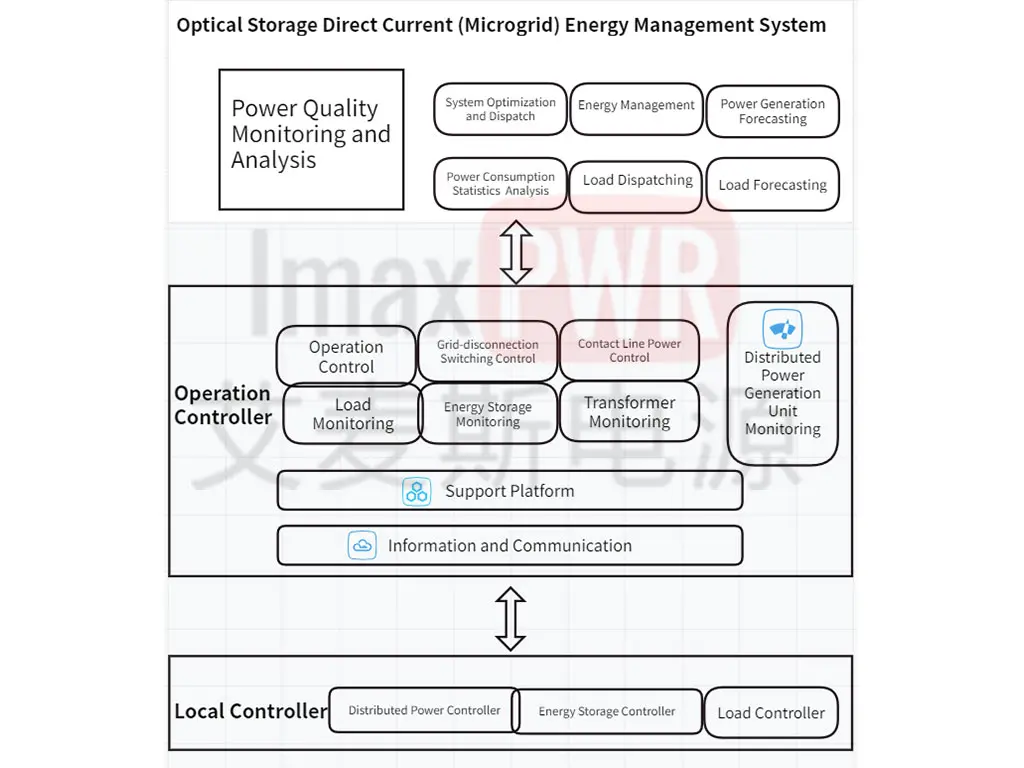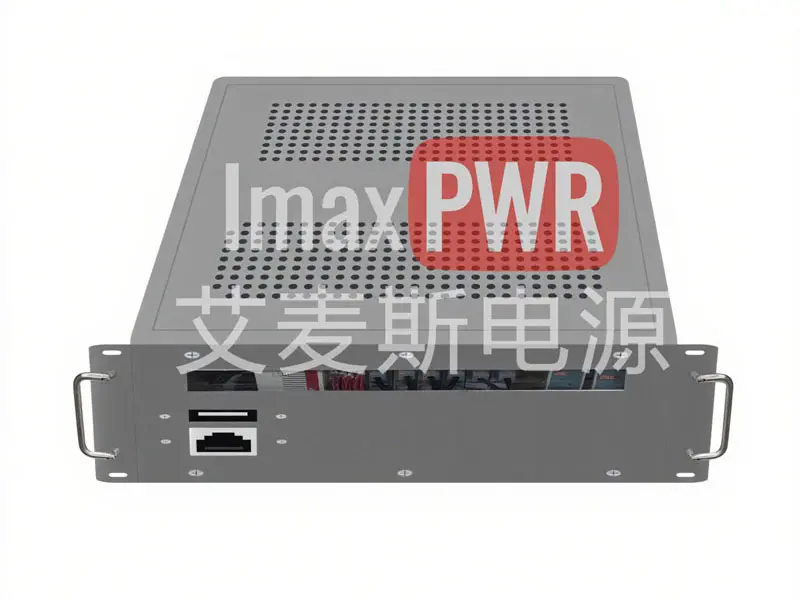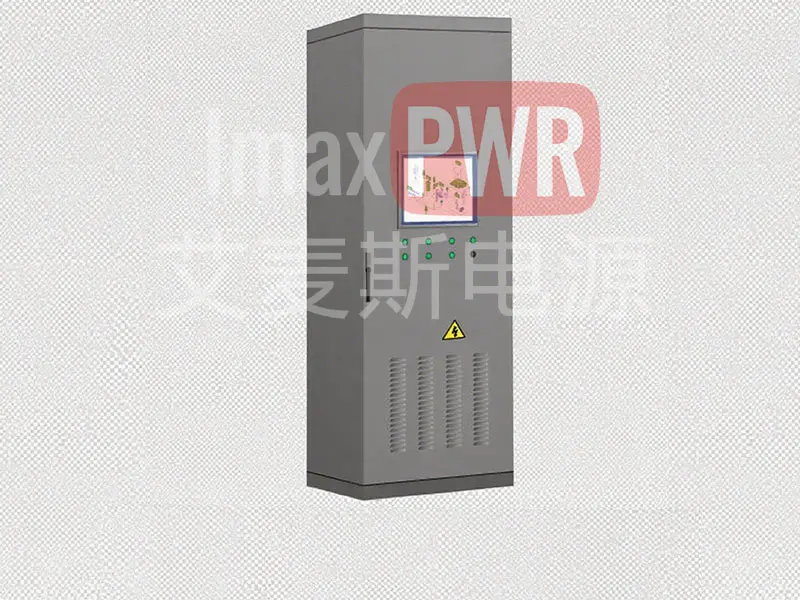Description
The power router is a key device for achieving intelligent energy distribution in the power system. It manages the dynamic power flow of multiple energy inputs and outputs through power electronic conversion and intelligent control technology
Its core functions include:
Multi-directional energy control, as the core of a microgrid, flexibly connects photovoltaic, energy storage, power grid and load through converters to achieve AC/DC networking. It actively regulates power flow based on algorithms to maximize the local consumption of clean energy. The monitoring and management system of the photovoltaic-storage-direct-flexible (microgrid) system is designed for unmanned operation (with few personnel on duty). Due to the small installed capacity and low grid connection voltage level, dispatch management is not considered. An industrial embedded controller is used as the operation controller of the photovoltaic-storage-direct-flexible (microgrid) system to control the local controllers (such as converters and equipment controllers) of the photovoltaic system, battery energy storage system, charging piles and intelligent perception devices, and transmit the corresponding status and fault signals to the photovoltaic-storage-direct-flexible (microgrid) system energy management software (deployed on the energy management platform).

Application scenarios
Zero-carbon parks: integrating photovoltaic power, energy storage and load control to reduce carbon emissions.
Photovoltaic energy storage charging stations: Coordinating new energy power generation and electric vehicle charging demands
Smart Distribution Area: Solving the Problems of New Energy Absorption and Flexible Mutual Assistance in Distribution Areas
Off-grid power supply: providing complementary power supply of wind, solar and energy storage for 5G base stations, oil fields and other off-grid scenarios.
Energy management layer of the photovoltaic-battery-storage-direct-current-flexible (microgrid) system (deployed on the energy management platform)
The energy management layer of the photovoltaic-battery-direct current-flexible (microgrid) system is implemented by its energy management system software. Its basic function is to monitor the real-time operation data of the photovoltaic-battery-direct current-flexible (microgrid) system. Meanwhile, the photovoltaic-battery-direct current-flexible (microgrid) energy management system can also achieve advanced application functions such as distributed generation prediction, load prediction, power quality analysis, power statistics analysis, and reactive power optimization. Based on the real-time operation data and the application analysis results of distributed generation prediction and load prediction, the photovoltaic-battery-direct current-flexible (microgrid) energy management system formulates the optimal dispatch and energy management strategies for the photovoltaic-battery-direct current-flexible (microgrid) system under multiple constraints, and then issues the formulated strategies to the photovoltaic-battery-direct current-flexible (microgrid) system operation controller.
(2) Operation control layer of the photovoltaic energy storage direct flexible (microgrid) system (deployed on the microgrid controller)
The operation control layer of the photovoltaic storage direct flexible (microgrid) system adopts the CX5120 embedded controller equipped with the Intel® Atom™ processor and TwinCAT 3 automation software. The main functions are realized by the photovoltaic storage direct flexible (microgrid) system operation controller, including receiving, translating and executing the control strategies issued by the comprehensive monitoring master station of the photovoltaic storage direct flexible (microgrid) system, and completing the operation control tasks of the main photovoltaic storage direct flexible (microgrid) system. It also includes: conventional operation control of the photovoltaic storage direct flexible (microgrid) system, power control of the tie line, on-grid and off-grid switching of the photovoltaic storage direct flexible (microgrid) system, and monitoring of distributed generation units.
The operation controller of the photovoltaic-storage-direct-current-flexible (microgrid) system can achieve the isolation of the system from the main grid in case of a fault in the main grid, and can also isolate each faulty area within the system. Meanwhile, the stable control of the system’s state during the on-grid/off-grid switching process and during off-grid operation is also realized by the operation controller of the photovoltaic-storage-direct-current-flexible (microgrid) system.
(3) Local control layer of the photovoltaic energy storage direct flexible (microgrid) system (deployed in power source/load controllers)
The local control layer of the photovoltaic-storage-direct-flexible (microgrid) system is mainly composed of the controllers of each key equipment, including distributed generation control units (such as photovoltaic controllers), energy storage conversion modules, intelligent switches, load controllers, etc. The devices in the local control layer of the photovoltaic-storage-direct-flexible (microgrid) system complete relevant operations by executing the control instructions of the system operation controller, thereby realizing the operation control function of the photovoltaic-storage-direct-flexible (microgrid) system.
The operation controller of the photovoltaic-storage-direct-flexible (microgrid) system – that is, the local-level microgrid central controller
The central controller is used to monitor and control each source device within the power router, achieving functions such as grid connection, off-grid operation, grid connection/off-grid switching operation (optional), fault protection, data storage and display for the photovoltaic-storage-direct-flexible (microgrid) system based on the power router. The system architecture is shown in the following figure.
Features:
1. High reliability and strong anti-interference ability.
It is well equipped, fully functional and highly versatile.
Small in size, light in weight and low in energy consumption.
It has strong compatibility and can be compatible with the vast majority of hardware on the market, such as various acquisition cards, communication cards, etc.
5. Modular design, hot-swappable, and strong expandability.
Based on the Intel architecture, it has strong computing power, supports advanced language programming, and supports networked services.
The control function is rich, meeting the needs of system power control and monitoring functions.
Software Functions
Four-remote Control – Achieves remote adjustment, remote control, remote signaling, and remote measurement functions for all devices within the photovoltaic storage direct flexible (microgrid) system and the distribution system.
Data collection – Voltage and current data collection at each node of the photovoltaic energy storage direct current flexible (microgrid) system.
Communication processing – Connects with all devices within the photovoltaic energy storage direct current flexible (microgrid) system to achieve communication connection, supporting RS485, TCP/IP and CAN communication. It enables the setting of key control parameters for each device, such as start/stop, power, voltage, current, protection threshold, and monitoring of the operational status of each device.
Distribution and protection control – By controlling the actions of various relays within the system through a digital control system, distribution control and fault control are achieved.
Energy Management of Photovoltaic-Battery-Storage-Direct-Flexible (Microgrid)
Upper Computer Monitoring and Management System
The energy management software for the photovoltaic-storage-direct-current-flexible (microgrid) system can communicate with the system controller to achieve upper-level computer engineering operation and maintenance management. It enables remote monitoring of the system’s operating status via the Web.
Energy management function
Real-time data monitoring – Real-time statistics on the operating status of power generation equipment, power generation capacity, total power consumption of electrical equipment, charging and discharging power of energy storage, etc. Supports display in the form of line graphs and pie charts.
Equipment status monitoring – Real-time monitoring of the operating status of equipment within the photovoltaic storage direct flexible (microgrid) system, and intuitive display of the operating status through different colors.
Overall status of the photovoltaic-battery-storage-direct-current-flexible (microgrid) system – including the following monitoring contents: operating status, power at the grid connection point, system frequency, total revenue, indoor temperature, fire alarm, etc.
One-line diagram – real-time data refresh, dynamic coloring, power flow animation, equipment and control operation functions, etc.
Photovoltaic monitoring and prediction – including statistics on power generation and power conditions, energy conservation and emission reduction situations, weather forecasts, and photovoltaic power generation power prediction functions.
Load monitoring and prediction – including the total load power curve within the photovoltaic-storage-direct-flexible (microgrid) system, the power curves of important loads, the time-of-use electricity consumption within selected time periods, load power prediction curves, and the real-time electricity consumption power of various types of loads.
Energy storage monitoring – including the daily energy storage power curve, the daily energy storage SOC, the charging and discharging power at different time periods, the charging and discharging power curves and real-time status monitoring of each group of energy storage batteries, and the daily energy storage charging and discharging power at different time periods, etc.
Alarm Analysis – Mainly analyzes and displays historical alarm information, including alarm analysis and detailed records of historical alarms.
Environmental monitoring – Monitoring the temperature, humidity and fire alarm signals inside the energy storage cabinet, and controlling the relevant equipment.
Report Function – System reports are used to organize historical data into tables in a flexible manner and have a printing function. Historical data is displayed in table form and statistical reports are formed. The generated reports can be saved as Excel files or text files.
Long-term data storage – Various data during system operation, such as voltage, current, power, weather, etc., are stored in data files. Depending on the size of the hard disk, data for more than one year can be saved. Meanwhile, historical data can be selected for opening and viewing.



